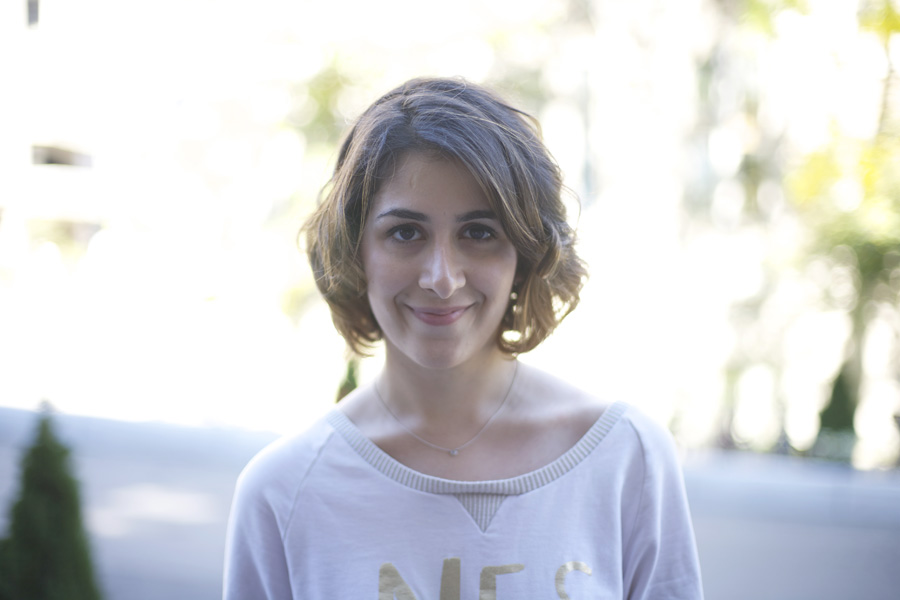Known for its excellence in research, McGill University is home to a host of professors and scientists known for their prestigious work and contributions to scientific innovation. In tribute to the amazing research conducted within McGill’s walls, SciTech will feature each month student researchers who have helped contribute to the cutting edge science conducted at the laboratories. This series hopes to shine a spotlight onto the hard work of undergraduate students who dedicate themselves to research in the lab.
“Can I swab your nose?” This was the question Maral Saghaei, U2 Microbiology and Immunology student, asked this past summer while working at Dr. Joaquin Madrenas’ laboratory.
“At first [I thought] it [was] so disgusting and awkward, because I would be swabbing people’s noses,” Saghaei laughed. “It ended up being a lot of fun, [….] I went to every floor and I went to see teachers. [….] I felt like a [Girl Guide selling cookies] that day, but it was fun.”
A year ago, Saghaei never expected to be working in a laboratory. But after hearing in lecture about some of the dynamic experiences she could have working at a lab at McGill, she decided to try her luck and apply.
“I saw this TEDx Montreal video of Dr. Madrenas [….] His was so interesting because he made a link between diseases and the immune response and he linked that to music,” Saghaei said. “So he played a song and he [used it to explain the science]; it just made so much sense and it was so beautifully put.”
Saghaei applied to the laboratories of many of her professors from that year in addition to the laboratory of professor and Chair of Microbiology and Immunology Joaquin Madrenas. However, she mostly received responses that the labs were full, or they weren’t looking to take on any undergraduate students. When Madrenas didn’t answer her until three days later, Saghaei has already assumed his answer was a ‘No.’
“Madrenas wrote to me three days later, and he was the person I felt for sure was not going to take me—he is the Chair of microbiology and immunology—and when I saw he wasn’t answering, I thought he was not even going to bother to say no, you know. He emailed me three days later asking me when I would be available to meet, and then I was like, ‘Oh, this guy just wants to lay it on me nicely, and say no in person.’”
Saghaei was even more surprised that Madrenas did not ask her about her experience in science when she went to meet him. Instead, they spent an hour having a conversation, which, according to Saghaei, didn’t even feel like an interview.
“It just ended up being an hour [talking] about the arts, and then after that he asked, ‘So when will you be ready to start?’”
Like most undergraduate students, Saghaei did not begin her work at the laboratory with a research project. Instead, she provided support work for the other students working at the laboratory.
“They often have blood donors come in, two or three people a week,” explained Saghaei, “so I would help with the PBMC [peripheral blood mononuclear cells] isolations, which is what we use in the lab to do all of our research.”
Saghaei then progressed to working on her own research project this past summer, which involved determining if healthy donors carry the microbe Staphylococcus aureus in their noses. Upon infection, the microbe can cause septic shock (a severe immune response) if it gets into the bloodstream.
“We wanted to see if they do or do not [carry S. aureus] and see if they express TLR1 [a receptor that stimulates the innate immune system] on their cells, because that is the one that detects S. aureus and it is from TLR1 that you get the biggest inflammatory response,” Saghaei explained.
She spent the majority of the summer staining the cells of blood donors to see if they expressed TLR1. Based on her results, Saghaei found that while all humans carry TLR1, about 40 per cent lack TLR1 expression on the surface of their cells. The lack of TLR1 on cell surfaces can lower patients’ chances of dying from septic shock caused by S. aureus in the blood. It may also be associated with reducing chances of contracting leprosy and tuberculosis. Still, further research must be conducted until these results can be published.
Regardless, Saghaei has found her laboratory experience invaluable. Through learning all the techniques at the lab and applying her studies to data analysis, Saghaei says she feels she has really began to apply her learning at McGill. Like many students involved in research, she hopes that other undergraduates won’t be hesitant to get involved if something interests them.
“Just be yourself. I know it’s so cliché—everybody always says it, but … when I went into the interview with Dr. Madrenas I thought I didn’t have it. So I calmed down and I was just myself and we talked about things that actually interested me, and then he decided that he wanted to take me into the lab,” explained Saghaei.
Saghaei has a final word of advice. “Be honest. Dr. Madrenas asked me if I saw myself continuing in research or doing a masters in the department and I told him, ‘No, I don’t want to do that forever, I want to be a doctor’ and I was honest about it,” she added. “I didn’t pretend that I was overly excited, but I told him that I thought it would be interesting to learn about this. If I am going to be spending the next three years in this department, I might was well enjoy it and invest myself in it.”








